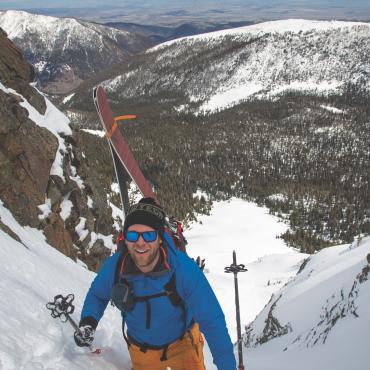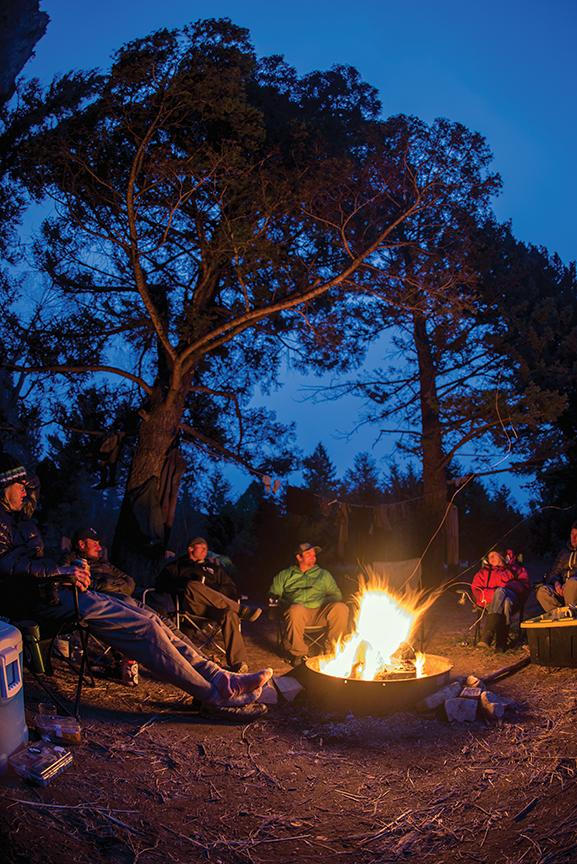Spinning Yarn
How to tell an adventure story.
Call them fish stories, tall tales, flights of fancy, or yarns—whatever term you use, the stories we tell about our outdoor adventures can be as much fun as the adventures themselves. The finest storytellers among us leave barroom audiences rapt, on the edge of their stools, engrossed in second-hand experience, malleable as clay in the hand of their captivating orator. It takes practice, however, to wield a story well. It’s not enough to narrate events—a great story requires nuanced description, action, suspense, and resolution. Sometimes it even requires stretching the truth a bit—in the name of the craft, of course. Here are some general guidelines to help you spin a yarn with the best of them.
Rule 1: No Pictures
As great as your grainy iPhone images are (they’re not), they pale in comparison to the powerful imagery you can create with words. Whipping out your cell phone and narrating a tiny-ass Instagram slideshow doesn’t count as storytelling. It’s lame. You’re lame. Your adventure will seem lame. It’s all about creating depth, so put down the phone and weave us a campfire tale that will make you a legend in our eyes. It’s not the specific events that matter to your audience; it’s the way you tell the story.
Rule 2: Hyperbole
It wasn’t just a bear. It was a snarling leviathan that stood ten feet tall at the shoulder, staring down at you with hate-filled eyes and a blood-soaked muzzle. Hyperbole is, by definition, exaggeration and not to be taken literally. But it adds depth and texture to your tale, and hell, it’s super fun for the storyteller and the appreciative audience—it becomes almost a contest of creativity. Sell the crap out of your story—especially the parts that aren’t quite true.
Rule 3: Gesticulation
Adventure stories typically include periods of intense action—running, climbing, falling, searching, swimming, etc. They also often include pain and suffering—or maybe that’s just me. Swat imaginary insects, sight down an imaginary rifle barrel, use your hands to recreate a mountain-bike crash down a cliff. Your body is a tool to help tell your story, and gestures help keep it dynamic. Otherwise, you’re just quietly talking to yourself on a barstool.
Rule 4: Eye Contact
This is not a ninth-grade poetry reading. Eyes up! Engage your listeners with eye contact. Your eyes are the most expressive part of your body—use them. You are afraid, you are resolute, you are triumphant. Your eyes say it all. Sell it.
Rule 5: Alcohol
A well-lubricated audience is rarely a bad thing. Alcohol in reasonable doses loosens inhibitions and encourages imagination. Buy a round and tell your tale skillfully—you’ll get it back threefold. The best part? A well-told story almost invariably leads to another. Spin on.












